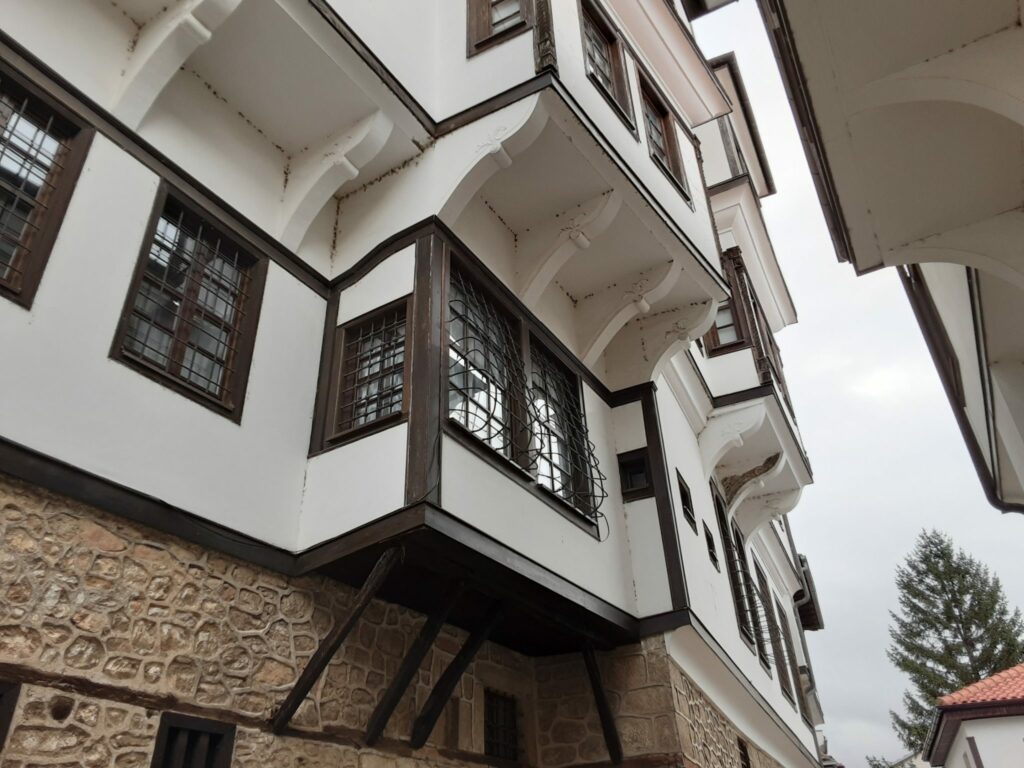Course sections
1. A World Heritage city
2. Our city
3. Our environment and buildings
4. Your city!
2. Our city
Inside the buildings
Representative residential buildings

The buildings, which are preserved and represent cultural heritage, can be divided into several typologies:
- Fishing buildings, with narrow, long plans, and dense sequences, which use in direct contact, part of the coast, and additional ancillary buildings on the coast itself.
- Representational buildings with big, massive and spacious structures, just like building the well-known family Robevci, a house recognisable because of its monumentality, today converted into the Museum of the City of Ohrid.
- Buildings built over the “dark streets”, using the air space and the economic aspect in the coast’s location.
The House of Robevci
This is the most representative example of the historic architecture in Ohrid. With its expressive urban, architectural and historical values. Built in 1861 – 1863 and entirely renovated, it is a rare example of architecture from the 19th century. The sheer size and unique architectural expression and character reflect the owners’ wish to make the building stand out from the average of other Ohrid houses. Some elements of the rich interior are preserved. In a niche, the signature of Dicho Zograf from 1862 attracts special attention. Let’s have a look inside:
The House of Grigor Prlichev
This is an interesting case. The old birth house of Grigor Prlicev was probably built in the first decades of 19th century, on the southeastern foot on the higher Ohrid hill, not far from Dolni Saraj and the church St. Sofia. It had a courtyard on the south side, with a beautiful view of the lake. In the 1930s, the house was already ruined, and ten years later completely disappeared.
What do you think has happened and now we have the house of Grigor Prlicev again? Let’s have a look inside: